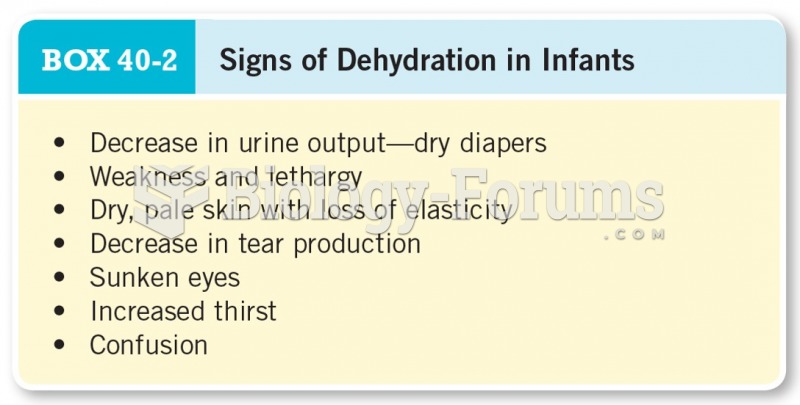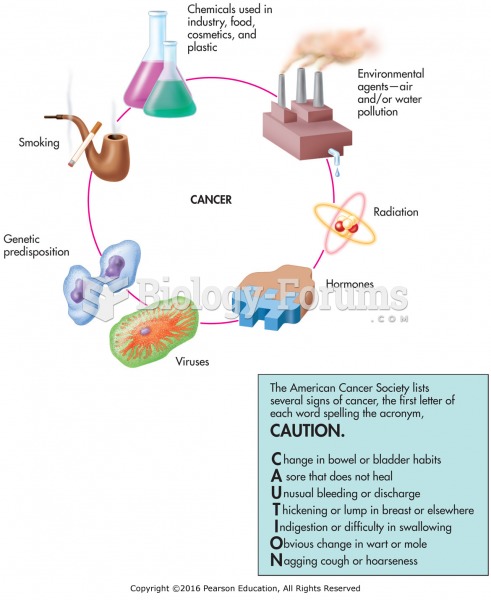|
|
|
Cytomegalovirus affects nearly the same amount of newborns every year as Down syndrome.
Bisphosphonates were first developed in the nineteenth century. They were first investigated for use in disorders of bone metabolism in the 1960s. They are now used clinically for the treatment of osteoporosis, Paget's disease, bone metastasis, multiple myeloma, and other conditions that feature bone fragility.
Women are 50% to 75% more likely than men to experience an adverse drug reaction.
The first oncogene was discovered in 1970 and was termed SRC (pronounced "SARK").
According to the National Institute of Environmental Health Sciences, lung disease is the third leading killer in the United States, responsible for one in seven deaths. It is the leading cause of death among infants under the age of one year.







